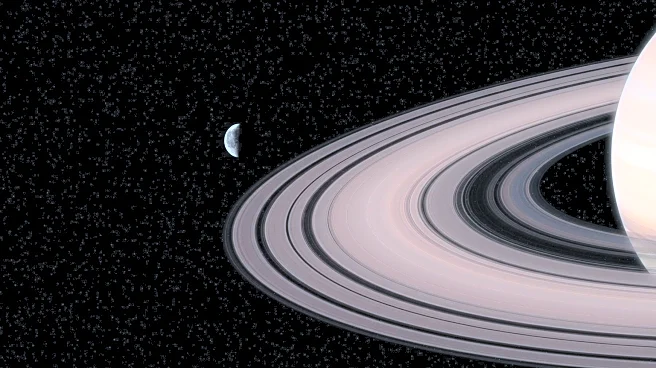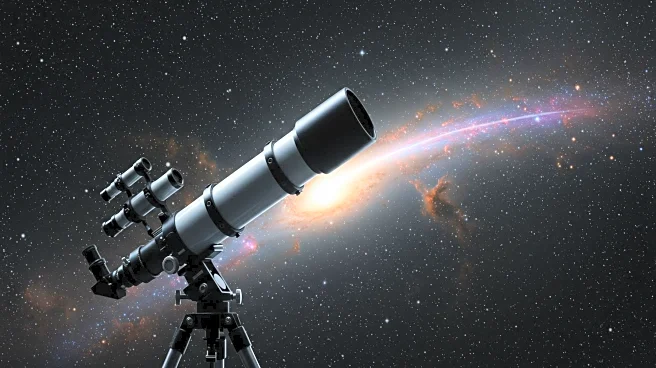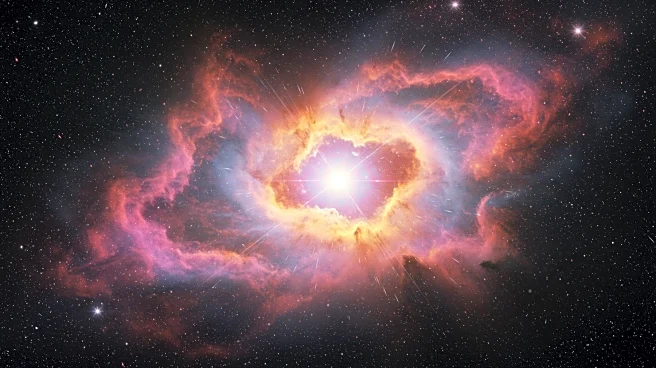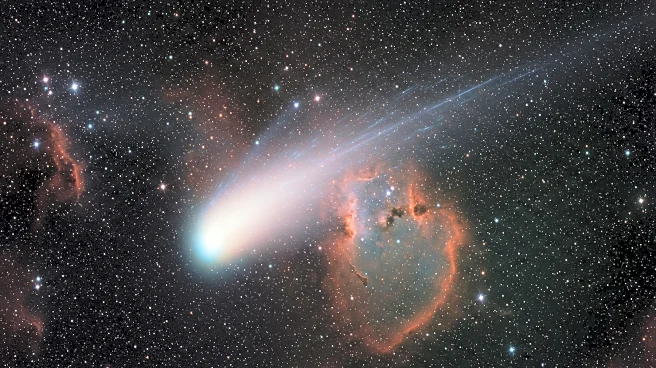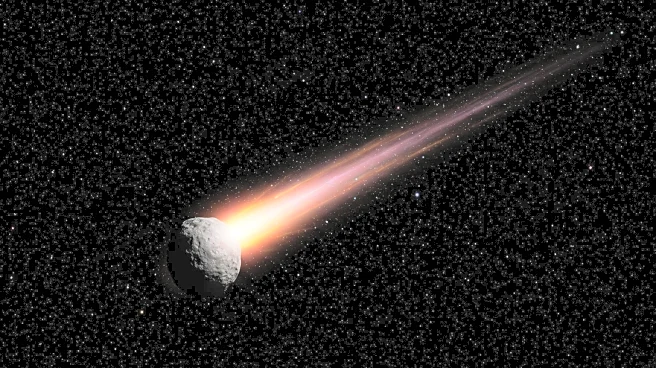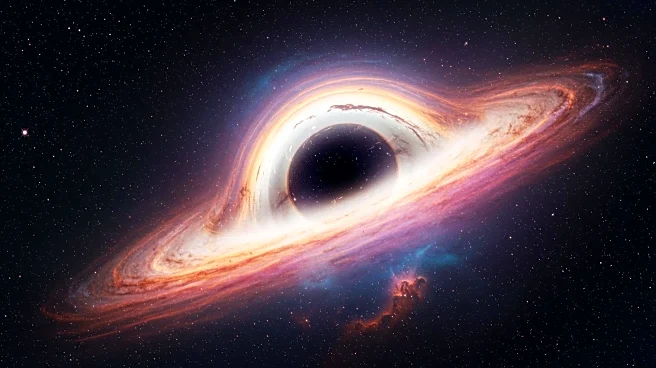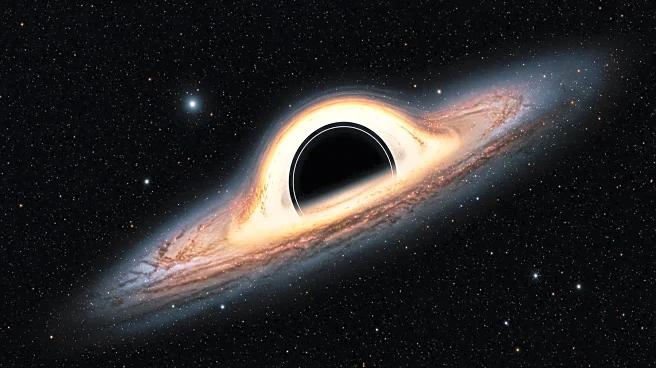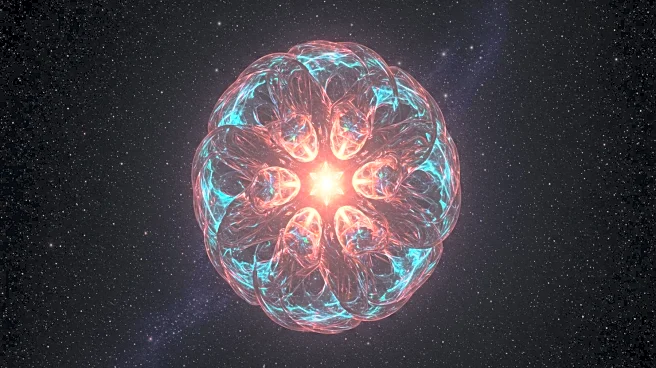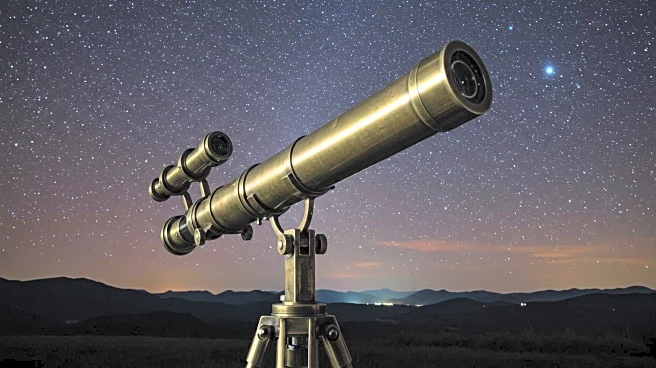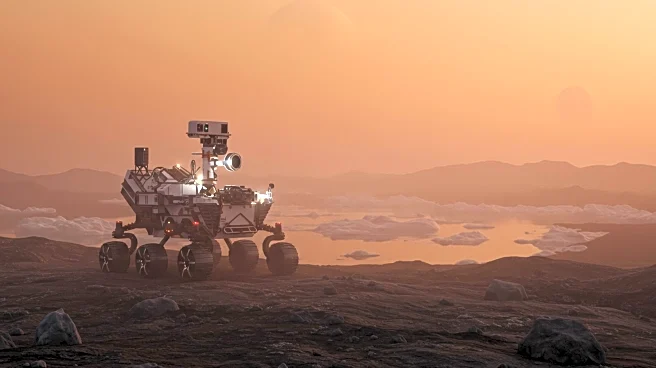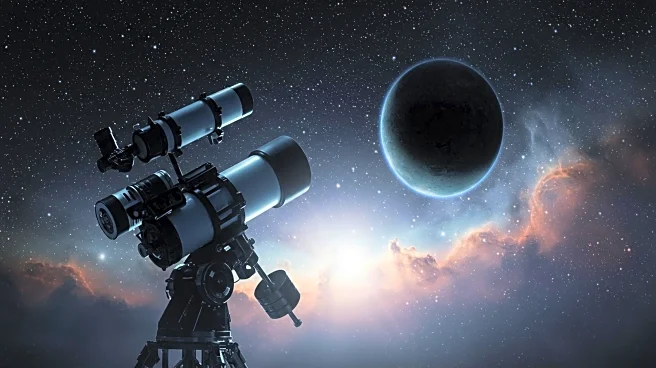What's Happening?
On August 16, 1898, a significant milestone in astronomy was achieved with the discovery of Phoebe, a moon of Saturn, through photographic means. William Pickering identified Phoebe in March 1899 using photographic plates taken by DeLisle Stewart. This marked the first instance of a moon being discovered photographically rather than through direct observation. Phoebe was initially thought to be Saturn's outermost moon due to its considerable distance from the planet, approximately 8 million miles away. However, subsequent discoveries have identified several smaller moons further out. Phoebe's irregular orbit, confirmed by the Cassini spacecraft flyby in 2004, suggests it is a captured object rather than a native satellite of Saturn.
Why It's Important?
The discovery of Phoebe was a groundbreaking event in the field of astronomy, as it demonstrated the potential of photographic technology in celestial observations. This method allowed astronomers to identify objects that might not be visible through traditional observational techniques. Phoebe's irregular orbit and distance from Saturn provided insights into the dynamics of captured celestial bodies, contributing to the understanding of planetary systems and their formation. The Cassini flyby further validated these findings, enhancing knowledge about the composition and behavior of such moons. This discovery paved the way for future explorations and technological advancements in space observation.
What's Next?
The discovery of Phoebe set a precedent for using photographic technology in astronomy, leading to more sophisticated methods of celestial observation. Future missions, like the Cassini spacecraft, have continued to explore Saturn's moons, providing detailed data on their composition and orbits. These missions aim to uncover more about the origins and characteristics of captured objects in planetary systems. Continued advancements in imaging technology are expected to facilitate the discovery of more distant and smaller celestial bodies, expanding the understanding of the universe.
Beyond the Headlines
Phoebe's discovery highlights the importance of technological innovation in scientific research. The use of photography in astronomy not only revolutionized the way celestial bodies are discovered but also opened new avenues for research into the history and evolution of planetary systems. The implications of such discoveries extend beyond astronomy, influencing fields like astrophysics and planetary science. Understanding captured objects like Phoebe can provide clues about the early solar system and the processes that shaped it.
